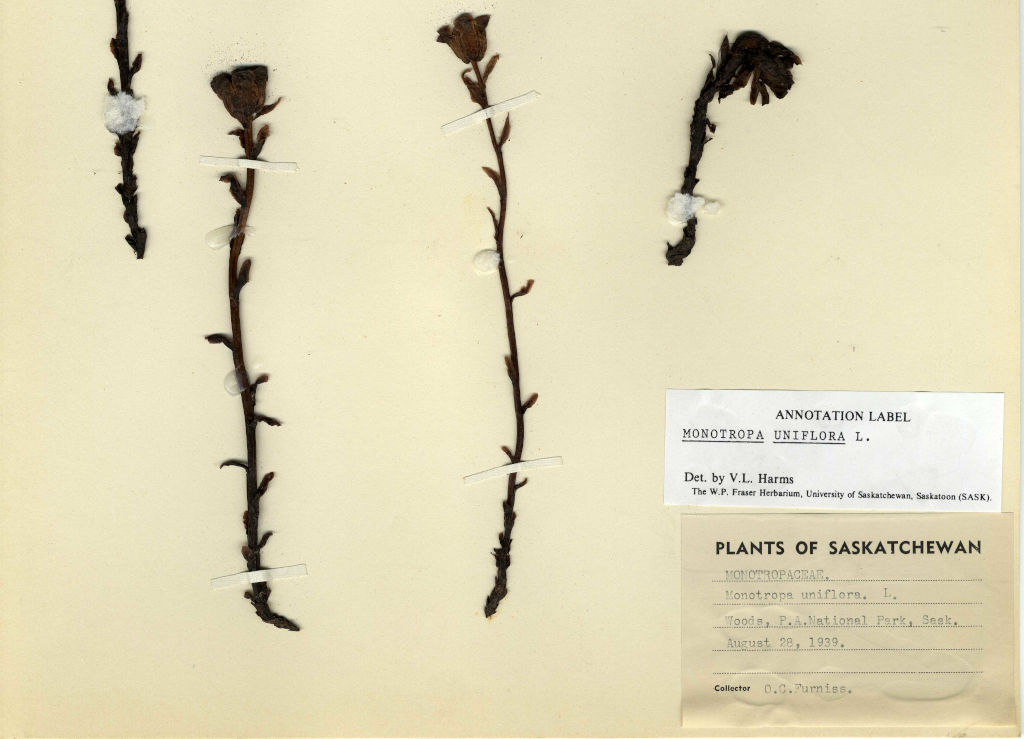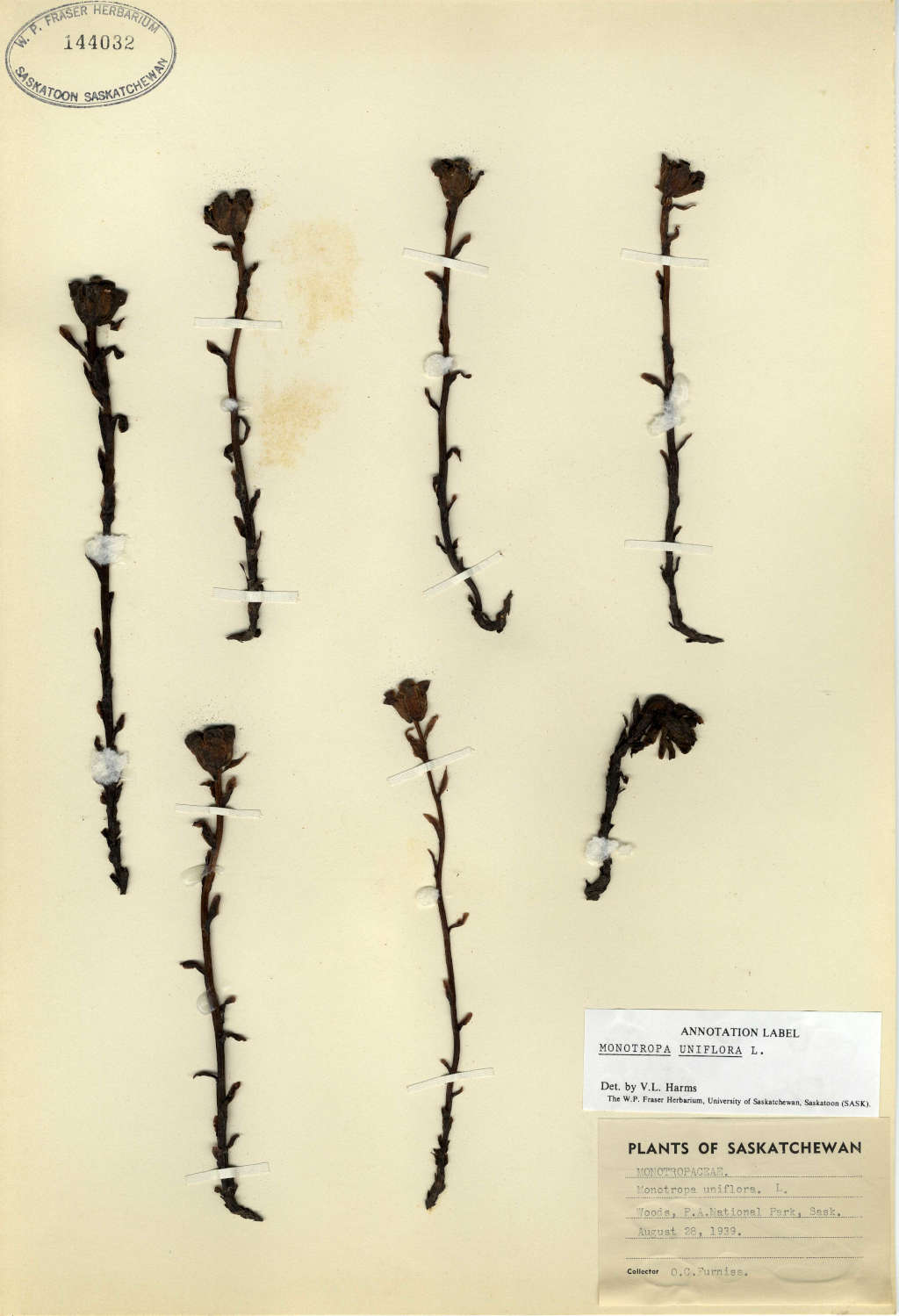
Monotropa uniflora
This parasitic plant has a ghostly appearance thanks to its lack of chlorophyll.
Monotropa uniflora L. is a unique plant found in Saskatchewan, in that its most distinguishing feature is its all white colour. While most plants you come across have green leaves or stems, that is due to the presence of chlorophyll. In this case, Monotropa uniflora lacks any chlorophyll, meaning it is unable to derive energy from the sun as most plants do. Instead, it maintains a parasitic relationship with fungi in the soil, where it takes all the energy it needs to survive. This herbarium specimen has turned dark brown as it was dried to preserve it on our collection. In Saskatchewan, it is most commonly found in the northern half of the province, in wooded, damp forests and boggy areas. Although, we also have a single occurrence of the species from the south-east corner of the province. This species is a member of the Ericaceae family, commonly known as the heath family. Other members of this family that most people would be familiar with are blueberries and cranberries.
This specimen was collected in August 1939 in the Prince Albert National Park.


